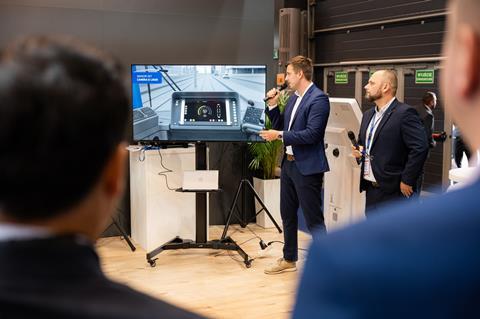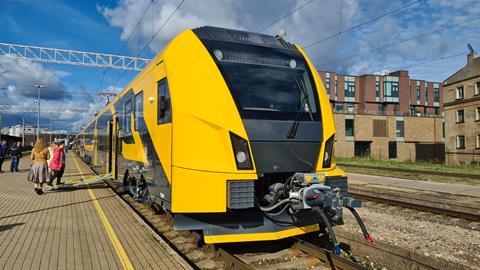
CZECH REPUBLIC: Škoda Group showcased its onboard technology for rolling stock at the Trako trade fair in Gdańsk on September 20.
The equipment includes a safety system aimed at tram and light rail applications, and automation technology aimed at suburban and main line operations. The products also reflect Škoda’s strategy to reduce its reliance on competitors for the supply of essential components such as train control units.
Reducing risk to trams
Škoda’s anti-collision system for trams uses a combination of LiDAR technology and cameras for object detection and HD maps and odometry for precise localisation.

The tool was developed and tested on the first 19 ForCity Smart Artic trams that Škoda Transtech is supplying to Tampere. The anti-collision system is in operation on one tram, reports Jiří Horáček, Sales & Marketing Director for Digitalisation at Škoda Group. The Tampere trials were undertaken to enable the system to be evaluated in all weather conditions, he adds.
Tests are also planned in several other cities, and the equipment is suitable for use on trams manufactured by Škoda or by other suppliers.
Main line ATO

Škoda also showcased its own ATO technology to be fitted to 32 four-car electric multiple-units that it is supplying for Latvian passenger operator Pasažier Vilciens. The ATO units are already in operation on the first batch of trains which are now undergoing testing and commissioning trials.
The equipment is able to set the optimal speed and manage energy consumption while ensuring the trains arrive on time for the next station.
The system works to the GoA2 level of automation, meaning that the driver only has to intervene to open and close the doors in normal operations. Škoda says that the equipment allows the operator to save up to 15% in traction energy consumption, subject to the specific ability of the drivers used for the comparison.
Smart tram depots
Škoda Group told Metro Report International that it has started the development of a smart depot concept for trams.
The project covers the development of a complete control architecture to allow a driver to leave the tram upon arrival at the depot. Trams then would be able to move autonomously around the depot area and find an appropriate stabling point for departure the next day.

















